- News
- Reviews
- Bikes
- Accessories
- Accessories - misc
- Computer mounts
- Bags
- Bar ends
- Bike bags & cases
- Bottle cages
- Bottles
- Cameras
- Car racks
- Child seats
- Computers
- Glasses
- GPS units
- Helmets
- Lights - front
- Lights - rear
- Lights - sets
- Locks
- Mirrors
- Mudguards
- Racks
- Pumps & CO2 inflators
- Puncture kits
- Reflectives
- Smart watches
- Stands and racks
- Trailers
- Clothing
- Components
- Bar tape & grips
- Bottom brackets
- Brake & gear cables
- Brake & STI levers
- Brake pads & spares
- Brakes
- Cassettes & freewheels
- Chains
- Chainsets & chainrings
- Derailleurs - front
- Derailleurs - rear
- Forks
- Gear levers & shifters
- Groupsets
- Handlebars & extensions
- Headsets
- Hubs
- Inner tubes
- Pedals
- Quick releases & skewers
- Saddles
- Seatposts
- Stems
- Wheels
- Tyres
- Health, fitness and nutrition
- Tools and workshop
- Miscellaneous
- Cross country mountain bikes
- Tubeless valves
- Buyers Guides
- Features
- Forum
- Recommends
- Podcast
£899.00
VERDICT:
A solid workhorse for the commute and with a change of tyres a blast on and off the beaten track
Weight:
12,170g
Contact:
At road.cc every product is thoroughly tested for as long as it takes to get a proper insight into how well it works. Our reviewers are experienced cyclists that we trust to be objective. While we strive to ensure that opinions expressed are backed up by facts, reviews are by their nature an informed opinion, not a definitive verdict. We don't intentionally try to break anything (except locks) but we do try to look for weak points in any design. The overall score is not just an average of the other scores: it reflects both a product's function and value – with value determined by how a product compares with items of similar spec, quality, and price.
What the road.cc scores meanGood scores are more common than bad, because fortunately good products are more common than bad.
- Exceptional
- Excellent
- Very Good
- Good
- Quite good
- Average
- Not so good
- Poor
- Bad
- Appalling
Too heavy, too stiff, overly harsh... all this went through my mind when I saw the spec sheet of Kona's Rove DL with its aluminium alloy frame, alloy fork and 12.17kg overall weight. Impressively though, the Rove is none of those things, it's an absolute blast, and although it needs a few tweaks it's still one of the best bang-for-buck bikes I've ridden in a long time, especially off the beaten track.
- Pros: Confident handling on and off-road, surprisingly comfortable
- Cons: Brake performance is below par, tyres are heavy
Kona says that the Rove is a multi-purpose, multi-surface drop-bar bike and that really does sum it up. It works everywhere, on the same day, on the same ride.
> Find your nearest dealer here
The Rove DL is described as a gravel racer-cum-commuter and in its standard guise it's set up for the latter, being the only model in the range coming fitted with mudguards for year-round usability.
The Schwalbe Delta Cruiser tyres will take a lot of abuse thanks to their 3mm thick puncture protection strip and you can easily flick between road, canal path and hardpacked gravel depending on where your route takes you. They even come with a reflective strip on the sidewall for commuting in the dark.
If performance is more important to you than durability, though, I'd suggest you ditch these tyres as soon as you can as they are heavy, dead feeling and suck the life out of what is a really good frameset.
The ride
Updating the rubber is the single best thing you can do to this bike. I had the Panaracer Race L Evo 3 tyres in for testing at the same time and what a difference they made, knocking at least a kilo off the overall weight and really upping the grip levels through the corners.
But the real eureka moment came when I fitted the Schwalbe G-One Bites that I was also testing. For a gravel tyre they are great on the road and, as you'd expect, even better when you make the switch to the aggregate.
Once this setup was in place I dropped the mudguards and really started to enjoy myself.
On the road the Rove is mild mannered. The steering is a lot slower than a road bike thanks to that slack 71-degree head angle, even with the short 80mm stem, but you never really notice it until you get back on a race machine.
Descending and other high-speed shenanigans are dealt with in unflustered fashion. Yes, you aren't likely to start chucking this thing through the bends, but if you do, the bike will soon let you know you are taking liberties well before you stack it into the verge. This is a very balanced frame which gives you plenty of feedback about what's going on.
Unless you really need to put the hammer down, the Kona covers ground quickly and is actually quite a pleasure to ride on the tarmac. In the middle of winter when there is mud on the roads, loads of water and maybe even a bit of snow, the Rove is just going to feel planted and confidence-inspiring, judging by how well it copes with riding on loose gravel and mud.
I've ridden a fair few gravel/adventure bikes over the last 12 months and the Rove is one of my favourites, which is kind of cool considering it's probably the cheapest.
With the surface moving around beneath you, the Kona feels planted, probably because of its weight – although when you are riding it, it feels like a much lighter bike. It's responsive and really likes to be ridden hard up those short, sharp climbs.
My first proper ride on the Kona was 100km, with about 80km of that on gravel ranging from the hardpacked stuff through to the tiny pebbles you can really float about on. Even when that happens the Rove is controllable just by a slight shift in body weight, and it's fun, really fun, whether you are an off-road novice or a skilled all-terrain bike rider.
Part of the route ended up on a grass bridleway straight after all of the rain we'd had in late March. The tyres weren't up to the job of dealing with the mud, but that didn't stop the Kona from remaining fun and easy to control as it slipped this way and that. Mud clearance was pretty good too.
Frame & fork
For the frame, Kona has specced 6061 butted tubing and from its ride qualities it is definitely a good choice. On the road with the tyres pumped up, it never feels harsh and offers impressive comfort for what is a simple build.
You don't get anything fancy here. There is no tapered head tube for instance and the tube profiles don't expand this way or that, maintaining their diameters from one end to t'other.
It's certainly stiff enough for its intended use too.
The gear cables are routed internally down to the bottom bracket before being sent off to their intended mechs for a reasonably clean look to the frame, and the rear brake hose goes underneath the down tube via guides and cable ties. It's not the neatest solution but well forgiven at this price, plus it adds to that whole purposeful, robust look of the Rove.
The rear end of the Rove doesn't have slender or curved seatstays for comfort, but as I've already mentioned, it doesn't really need them as the frame doesn't really suffer from any harshness.
The steep slope of the top tube allows you to run plenty of seatpost for a bit of flex anyway.
On some gravel bikes we've seen a move towards long top tubes and tall head tubes paired with a short stem, like the Merida Silex 9000, but Kona hasn't gone down this route.
For this 52cm model, sized by its seat tube length, the Kona has a top tube length of 549mm and a short head tube of just 130mm. I needed to run the 25mm of spacers under the stem for clearance of the handlebar so I didn't hit my knees on it when climbing out of the saddle, but if you really did want a slammed position for a bit of racing you can achieve it.
The Project 2 alloy fork is a bit of a beast when it comes to the size of those legs, especially when you are used to seeing more slender carbon fibre offerings. It works, though, and while you do feel a little more road buzz than from a carbon fork it isn't uncomfortable.
Stiffness is impressive, and you don't need to worry about damage so much if you whack a rock, pothole or crash the bike.
There is an external guide for the front brake cable rather than it being threaded internally through the fork leg; it makes for easier maintenance and it's positioned out of the way so it doesn't catch on branches and the like.
Both the fork and the frame uses post mount brake callipers rather than the neater and smaller flat mount found on most road bikes. They don't look out of place on the Kona as it's got that whole over-engineered kind of look going on.
The Rove DL also runs quick releases front and rear, which isn't that common a sight on disc brake-equipped bikes anymore, and although I'd like to see thru-axles, especially on the front just for peace of mind (I've had QRs vibrate themselves open on rough gravel), I'm not going to quibble at this price point.
As for the fixings and fittings, you obviously get mounts for mudguards with the fixing points easily accessible and in the traditional place, so if you do change the standard guards other brands will fit without fettling.
There are rack mounts on the frame and fork too, should you fancy a little light touring or want to use panniers for your trip to work.
On the whole it's a well-thought-out, simple but effective frameset that's well put together, and if you aren't a fan of this yellow paintjob you can also get it in orange.
Finishing kit
When our sister site off-road.cc recently tested this bike's big brother, the Rove NRB, their main criticism was the spec list, which is similar to what you get on this Rove DL but with a price of tag of £1,600.
That NRB model does get a lighter, more modern frameset with a tapered head tube, flat mounts, thru-axles and a carbon fibre fork, which goes towards that extra £700 over the DL. With the DL's cheaper frame and solid build the spec list makes a lot more sense and really complements the bike.
Our Rove comes with a Shimano Sora drivetrain, including a 50/34 compact chainset, front and rear mechs and STI levers. There are also threaded external bottom bracket cups fitted too.
It's a great groupset for the money, basically sharing everything with the 105 5800 group apart from a few material specs and a couple of gears as Sora is 9-speed.
The Sora chainset is paired to an Alivio cassette, with sprockets ranging from 11 through to 32 teeth, and I always felt like I had plenty of gears to get up and down the hills as quickly and efficiently as I wanted to.
A lot of gravel/adventure bikes are running 1x systems these days, but the cassettes can be a bit gappy for use on the road, so I think Kona has made the right choice here.
The shifting from the Sora levers is pretty quick and there is quite a defined clunk as it shifts across the gears so you know the shift has been made.
The shape of the hoods is comfortable and there is plenty of real estate for you to keep a good grip while bouncing around on the rough stuff.
It's no surprise to see cable-operated brakes here rather than hydraulics, and while the TRP Spyre Cs are by no way the scariest I've used, they do lack in bite and stopping power to the point where it's often better to plan an escape route rather than trying to stop.
Off-road, when the tyres are leaving the ground at speed between bumps and ruts, you really need some power in the brakes to slow the bike quickly when you are in contact with track; these just don't have it and things can get quite out of control.
The pads will require replacement quite quickly too; those on the test bike have worn fast in the wet, muddy conditions so an upgrade at the same time might be a good option to try.
I've mentioned the Delta Cruiser tyres already, so I won't bang on about them again, but what I will say is they are wrapped around some pretty impressive wheels.
WTB SX19 rims are paired to Formula hubs and boy can they take some abuse. The front and rear are both 32-holed rims running the spokes in a crossed pattern on both sides of the hub for strength and stiffness.
Throughout the test period they have remained as true as they were when I picked the bike up from the office, and they have seen it all – lots of rock hits, tree roots, potholes – and haven't complained once.
A range of tyres were easy enough to fit to the rims as well.
Road and trail conditions have changed from wet and muddy to dust and back again, with the hubs just shrugging it all off without a grumble. The only thing I'd pick up on is that engagement of the freehub isn't the quickest, most probably because of a minimal amount of pawls being used. It's not a major criticism but is noticeable if you are riding over technical terrain and need to feather the pedals a bit for ground clearance.
The seatpost, stem and handlebar are all Kona branded and do a solid job for what are basic components.
The bar flares out a little from the top down to the drops, which gives you a bit of extra stability if you are down on the bottom of the bar for a bit of speed on the descents.
Kona also supplies the saddle, and for me it was brilliant: a shape that really suited my shape, and with plenty of padding without being too squishy.
Value
As a whole I think the Rove DL is well on the money for its £899 price tag, even if it might not look it on paper – especially if you get hung up on its weight. You are getting a decent quality frame with a great ride and a good all-round spec list.
Competition-wise, I've ridden Vitus's Substance V2 Apex which, yes, does come with SRAM Apex 1x and hydraulic discs bolted to its steel frame and carbon fork for its £1,299.99 price tag, but it feels a much heavier and more muted ride than you get from the Kona. Vitus does sell the V1 version of that bike with a steel fork, mostly Tiagra groupset and similar brakes to the Rove DL for £799.99.
> Buyer's Guide: 18 of the best gravel and adventure bikes
Jack recently tested Raleigh's Mustang Sport which is a very similar beast to the Kona. It's a little lighter and does get a full-carbon fibre fork but an 8-speed Claris groupset. It'll set you back £800.
Another similar beast is the Marin Four Corners, which has a near-exact spec for £850, although it's made from steel rather than aluminium. It's heavier than the Kona too.
Conclusion
So there we go. Virtually all of the competition can be had for less money, but do you know what? I'd still happily pay the small premium for the Rove DL. It's a complete package and I'd know every time I go out for a gravel blast on it or negotiate a commute in tricky weather conditions I'd have a little smug grin on my face.
Verdict
A solid workhorse for the commute and with a change of tyres a blast on and off the beaten track
road.cc test report
Make and model: Kona Rove DL
Size tested: 52cm
About the bike
State the frame and fork material and method of construction. List the components used to build up the bike.
FRAME MATERIAL Kona 6061 Aluminum Butted
SIZES 48, 50, 52, 54, 56, 58
FORK Kona Kona Project Two Aluminum Disc
CRANKARMS Shimano Sora
CHAINRINGS 34/50t
B/B Shimano
PEDALS n/a
CHAIN KMC X9
FREEWHEEL Shimano Alivio 11-32t 9spd
CHAINGUIDE n/a
F/D Shimano Sora
R/D Shimano Sora
SHIFTERS Shimano Sora
BRAKE CALIPERS TRP Spyre C
FRONT BRAKE ROTOR TRP 29 160mm
REAR BRAKE ROTOR TRP 29 160mm
BRAKE LEVERS Shimano Sora
HEADSET FSA No.10P
HANDLEBAR Kona Road
STEM Kona Road
SEATPOST Kona Thumb w/Offset 27.2mm
SEAT CLAMP Kona Clamp
GRIPS Kona Cork Tape
SADDLE Kona Road
FRONT HUB Formula 100x9mm
REAR HUB Formula 135x10mm
SPOKES Stainless Black 15g
RIMS WTB SX19
FRONT TIRE Schwalbe Delta Cruiser Plus w/Puncture Protect 700x35c
REAR TIRE Schwalbe Delta Cruiser Plus w/Puncture Protect 700x35c
PAINT COLOR Gloss Mustard or Orange w/ Charcoal & Grey Decals
EXTRAS Fenders w/ Mudflaps
Tell us what the bike is for
Kona has this to say about the Rove: "The Rove became an instant classic in the Kona line as soon as it was introduced. Whether it was commuting or gravel racing or whatever you can imagine in-between, what people have done with their Roves has carved a niche here at Kona. It may sound like a cliché to call the Rove DL a versatile machine, but that's all your fault."
Frame and fork
Overall rating for frame and fork
8/10
Tell us about the build quality and finish of the frame and fork?
For the money I'd say the Kona is well made with decent welding, plus the paint finish has shrugged off everything I've thrown at it.
Tell us about the materials used in the frame and fork?
Both the frame and fork are made from 6061 series aluminium alloy.
Tell us about the geometry of the frame and fork?
Kona has gone for quite a relaxed front end which stops the steering being too twitchy off-road without sacrificing things too much when you are on the tarmac.
With a head tube of just 130mm though, Kona has gone for quite an aggressive, low position – but it works.
How was the bike in terms of height and reach? How did it compare to other bikes of the same stated size?
With a stack of 570mm and a reach of 385mm the Kona is similar to a lot of the gravel bikes I've ridden. There is just a few millimetres difference between this and the Vitus Substance.
Riding the bike
Was the bike comfortable to ride? Tell us how you felt about the ride quality.
Yes, the alloy frame isn't overly harsh and neither is the fork, especially if you are sensible with the tyre pressures.
Did the bike feel stiff in the right places? Did any part of the bike feel too stiff or too flexible?
For the job in hand the Kona is perfectly stiff enough.
How did the bike transfer power? Did it feel efficient?
Yes, surprisingly so. The Rove rides like a much lighter bike.
Was there any toe-clip overlap with the front wheel? If so
Only with the mudguards fitted.
How would you describe the steering? Was it lively Quick enough off-road while very neutral on the road.
Tell us some more about the handling. How did the bike feel overall? Did it do particular things well or badly?
The handling is spot on for what this bike is intended for. Fun without being twitchy on loose surfaces, but totally stable on tarmac.
Which components had the most effect (good or bad) on the bike's comfort? would you recommend any changes?
Everything worked well together and I was especially impressed with the Kona saddle for comfort.
Which components had the most effect (good or bad) on the bike's stiffness? would you recommend any changes?
The wheels were very impressive for such a budget offering, showing no flex or weakness.
Which components had the most effect (good or bad) on the bike's efficiency? would you recommend any changes?
The Schwalbe tyres are sluggish because of their compound and weight, so changing these is a must unless puncture protection is your number one priority.
Rate the bike for efficiency of power transfer:
8/10
Rate the bike for acceleration:
7/10
Surprisingly good considering its weight.
Rate the bike for sprinting:
7/10
Again, for what the bike is aimed at it's surprisingly nimble.
Rate the bike for high speed stability:
8/10
Rate the bike for cruising speed stability:
8/10
Rate the bike for low speed stability:
8/10
Rate the bike for flat cornering:
8/10
Rate the bike for cornering on descents:
7/10
Rate the bike for climbing:
8/10
Another place where the Rove surprises, considering its weight.
The drivetrain
Rate the drivetrain for performance:
8/10
Rate the drivetrain for durability:
8/10
Rate the drivetrain for weight:
7/10
Rate the drivetrain for value:
7/10
Tell us some more about the drivetrain. Anything you particularly did or didn't like? Any components which didn't work well together?
Shimano's Sora is one of the best bang for buck groupsets from the Japanese brand. It's basically the 105 5800 groupset minus a couple of gears, which in this instance never felt gappy across the range.
Wheels and tyres
Rate the wheels for performance:
8/10
Rate the wheels for durability:
8/10
Rate the wheels for weight:
7/10
Rate the wheels for comfort:
7/10
Rate the wheels for value:
6/10
Tell us some more about the wheels.Did they work well in the conditions you encountered? Would you change the wheels? If so
I was suitably impressed by the strength and all-round toughness of the wheel build found on the Kona. I'd only change them if I really wanted to shave weight.
Rate the tyres for performance:
5/10
Rate the tyres for durability:
9/10
Rate the tyres for weight:
5/10
Rate the tyres for comfort:
6/10
Rate the tyres for value:
7/10
Tell us some more about the tyres. Did they work well in the conditions you encountered? Would you change the tyres? If so
You can pick these Schwalbes up for little more than a tenner and if you want fit-and-forget puncture protection you can't go far wrong. If you are after anything in the way of performance, though, a change to something lighter and more responsive is a must.
Controls
Rate the controls for performance:
8/10
Rate the controls for durability:
8/10
Rate the controls for weight:
7/10
Rate the controls for comfort:
7/10
Rate the controls for value:
6/10
Tell us some more about the controls. Any particularly good or bad components? How would the controls work for larger or smaller riders?
The components are all from Kona's parts bin and they do the job they need to. The short stem stops the steering from becoming ponderous on the road but keeps it manageable off-road.
Your summary
Did you enjoy riding the bike? Yes
Would you consider buying the bike? Yes
Would you recommend the bike to a friend? Yes
Rate the bike overall for performance:
8/10
Rate the bike overall for value:
7/10
Use this box to explain your overall score
The Kona Rove DL is one of those bikes that just shows you should never base anything on spec lists, weight or any other facts and figures. This bike delivers everything it's designed to, whether on or off-road, with a decent array of components for a pretty good price.
About the tester
Age: 39
I usually ride: This month's test bike My best bike is:
I've been riding for: 10-20 years I ride: Every day I would class myself as: Expert
I regularly do the following types of riding: time trialling, commuting, club rides, sportives, fixed/singlespeed
Since writing his first bike review for road.cc back in early 2009 senior product reviewer Stu has tested more than a thousand pieces of kit, and hundreds of bikes.
With an HND in mechanical engineering and previous roles as a CNC programmer/machinist, draughtsman and development engineer (working in new product design) Stu understands what it takes to bring a product to market. A mix of that knowledge combined with his love of road and gravel cycling puts him in the ideal position to put the latest kit through its paces.
He first made the switch to road cycling in 1999, primarily for fitness, but it didn’t take long for his competitive side to take over which led to around ten years as a time triallist and some pretty decent results. These days though riding is more about escapism, keeping the weight off and just enjoying the fact that he gets to ride the latest technology as part of his day job.
Latest Comments
- open_roads 3 min 6 sec ago
Met police: "we're completely focussed on reducing violent crime"...
- Joe Totale 14 min ago
This is all conjecture but I guess that a more conventional wheel would not have just disintegrated like this one did and although would have been...
- KDee 24 min 44 sec ago
Sure that's not the non-AXS model? Even in the EU, this model has a list price of 4900 euros.
- eburtthebike 47 min 34 sec ago
eburt is out of the office. It's sunny here.
- Kendalred 47 min 44 sec ago
"Another cycle lane in Poole made national headlines after upset locals complained to the Daily Mail, Telegraph, and GB News" Nuff said...
- webbierwrex 58 min 39 sec ago
He has a great youtube channel with "shorts" detailing where he is at. Also shows the testing he has put in to the higher is more aero side of...
- chrisonabike 1 hour 12 min ago
Surely you'd do as well with a carbon-fibre sofa and some balloons (I bet this think isn't great in a gale either)? Or - if the goal is to get...
- spen 2 hours 20 min ago
In December last year Charlie Baker the head of the NCAA was giving evidence. It went like this ...
- Hirsute 3 hours 46 min ago
I think the driver would have accelerated more with the same result.
- levestane 4 hours 23 min ago
I wonder what the same view will look like in 2035?












































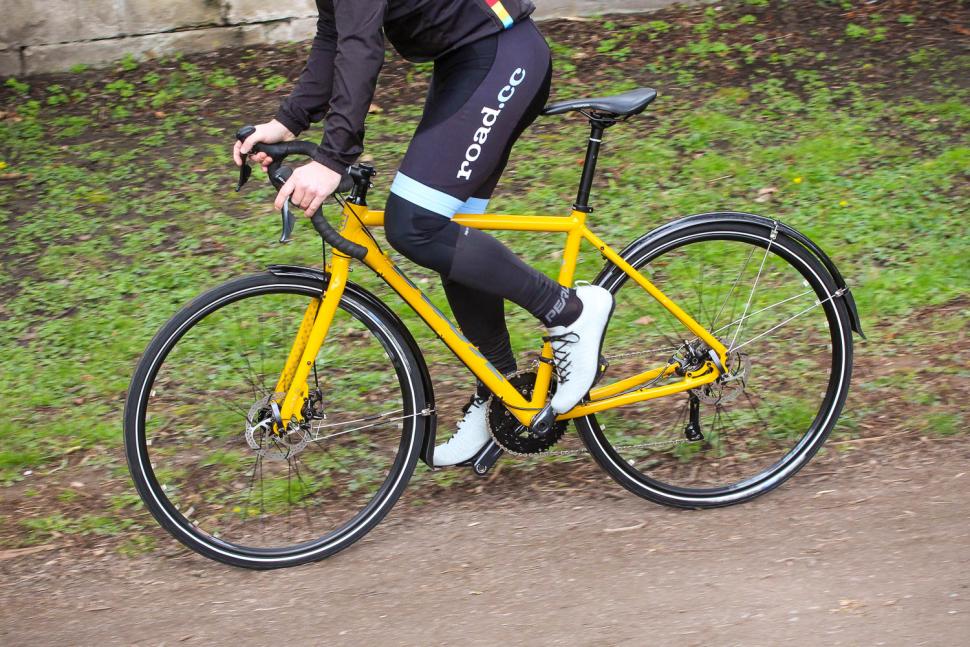
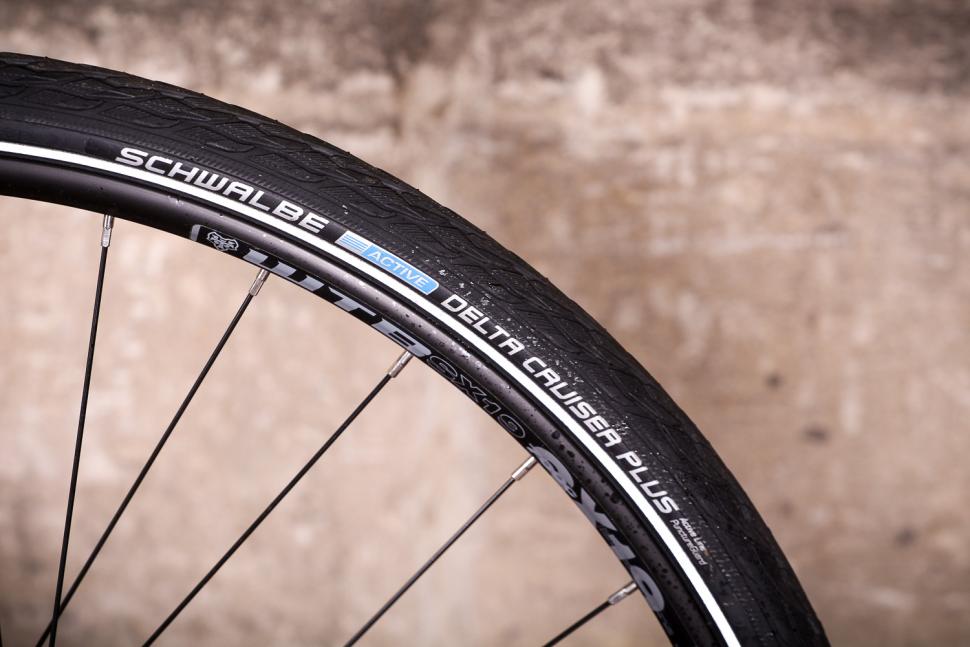
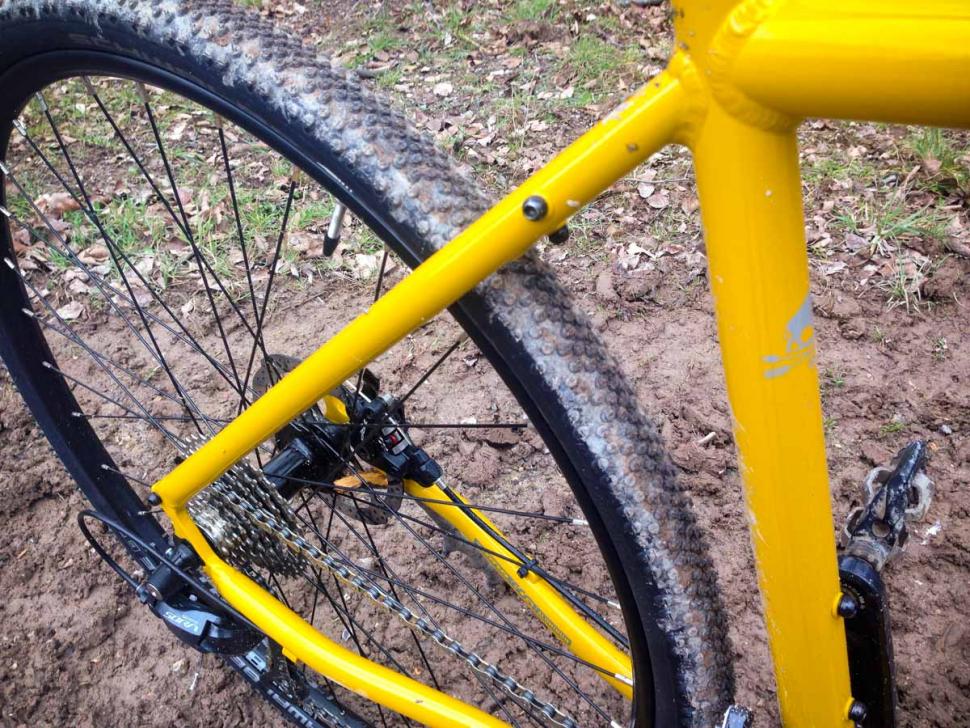
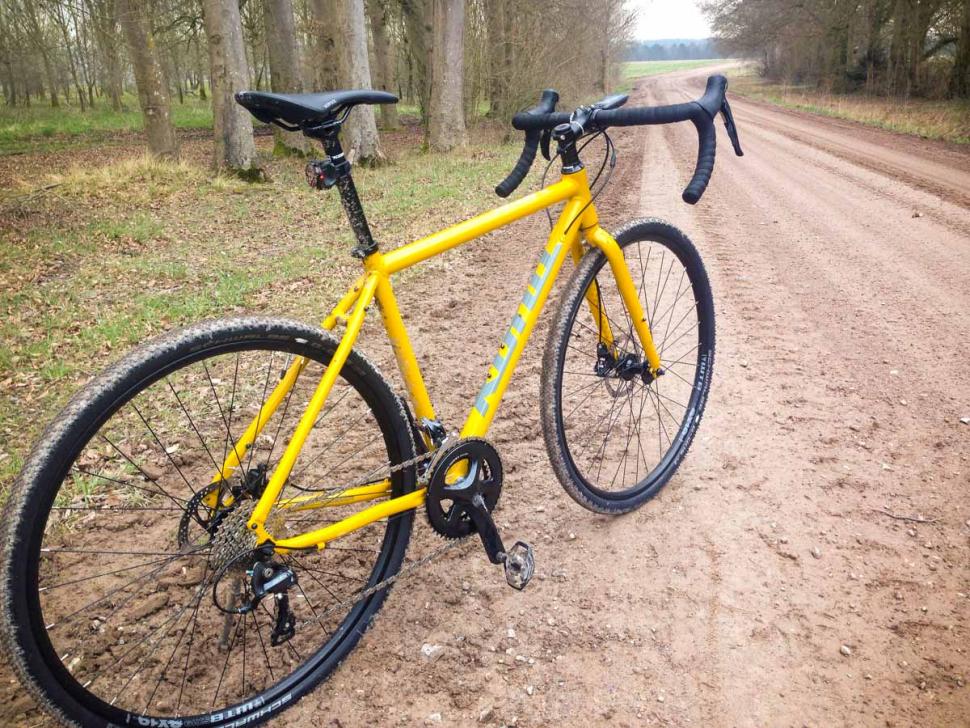

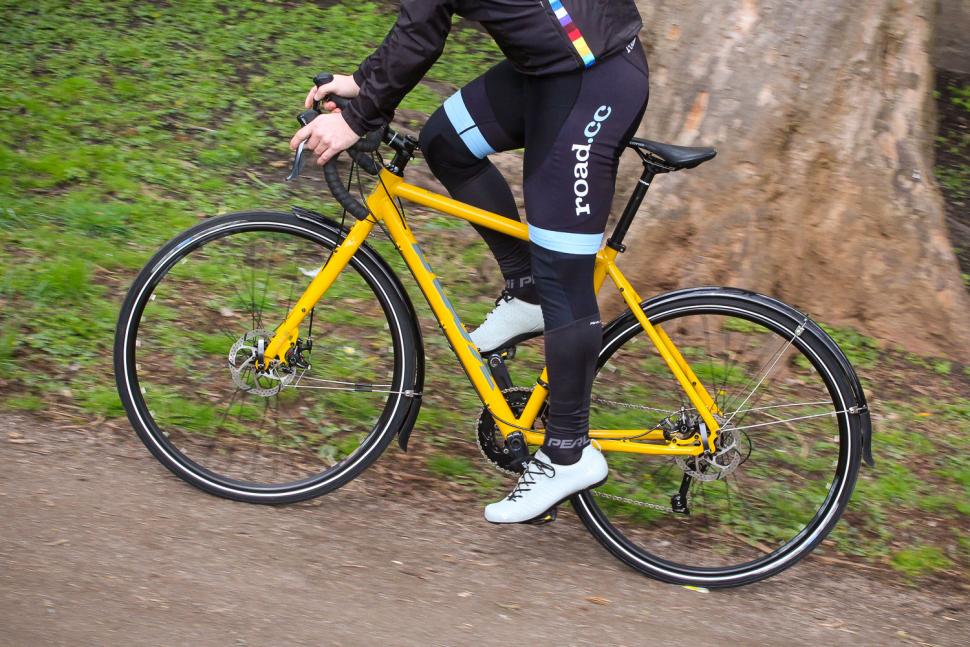
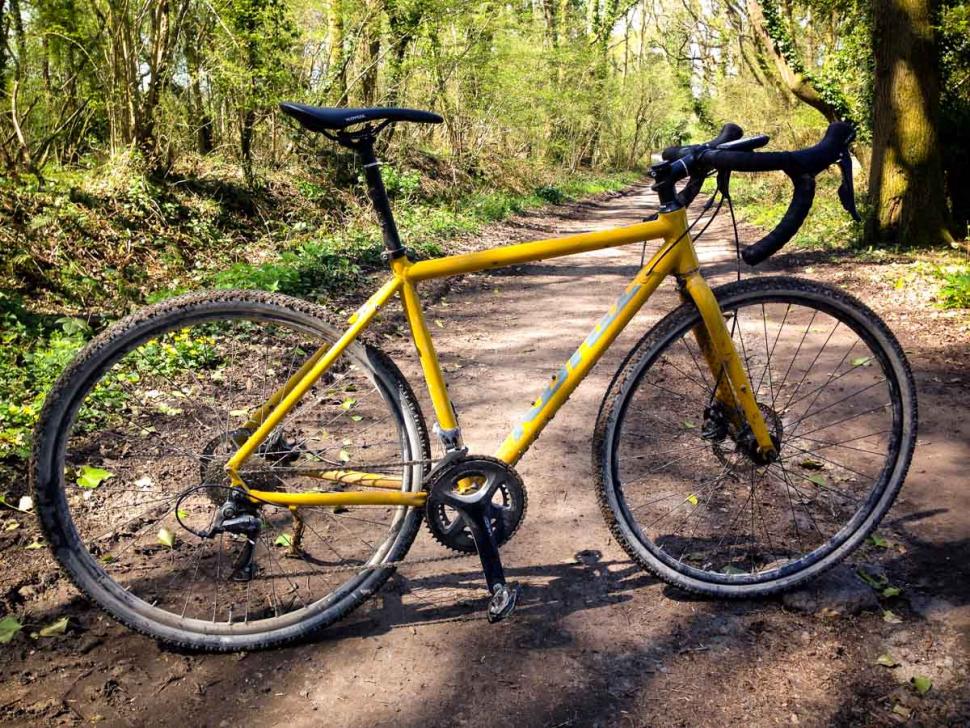
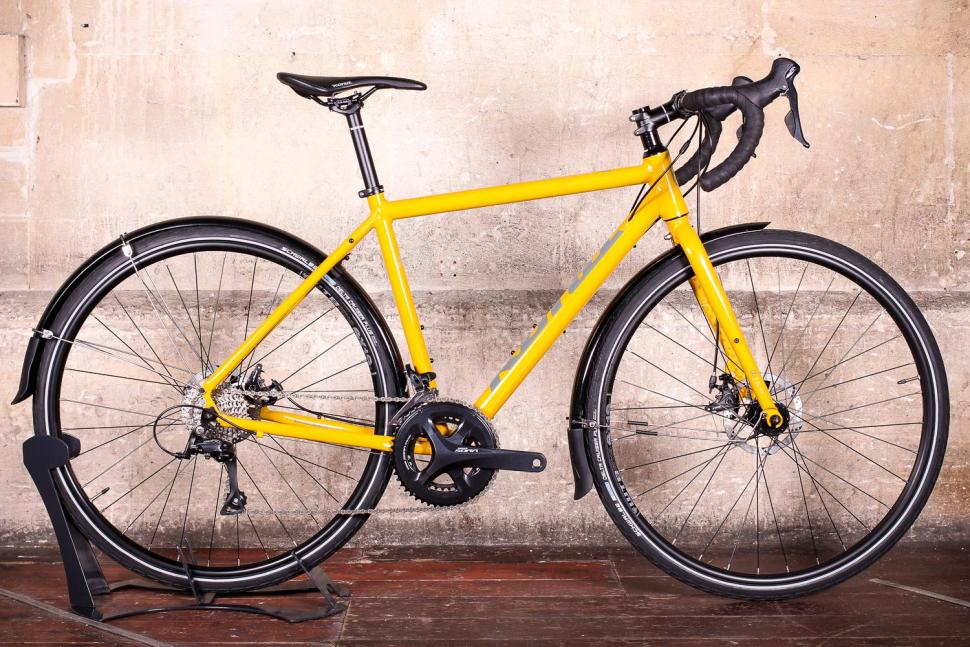

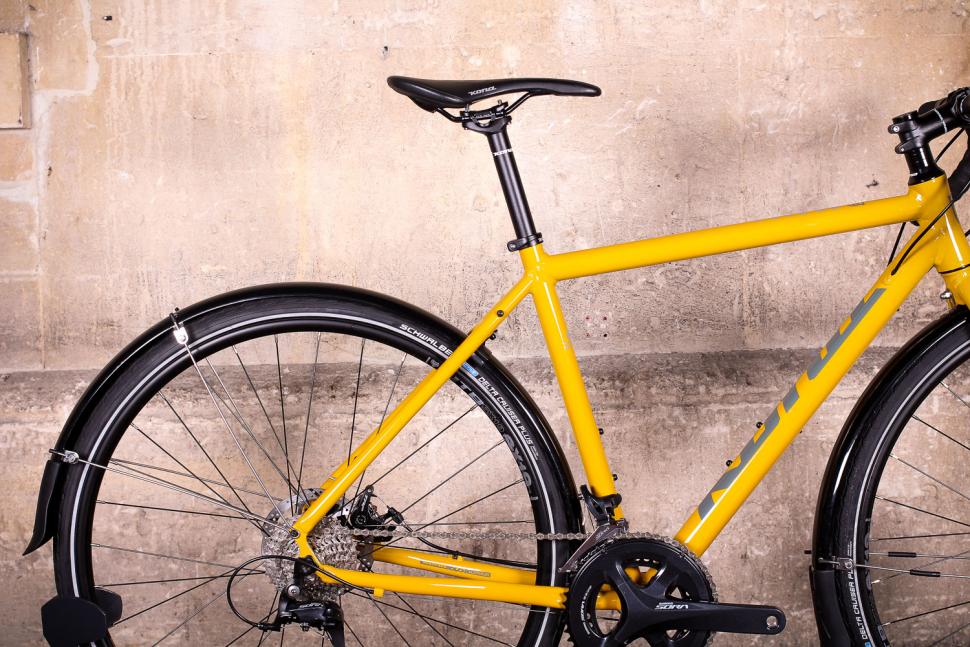
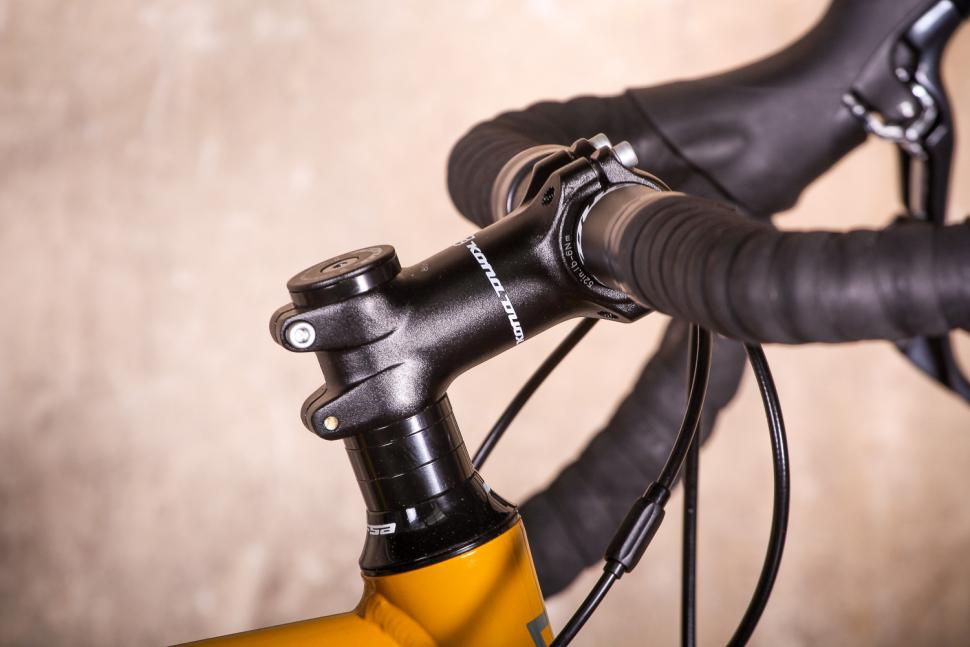

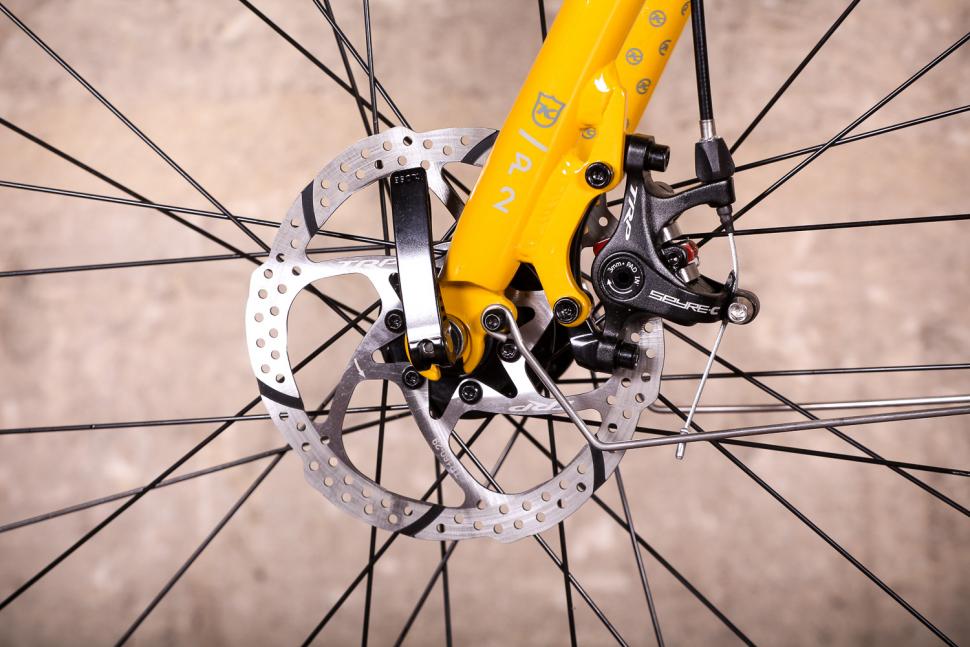
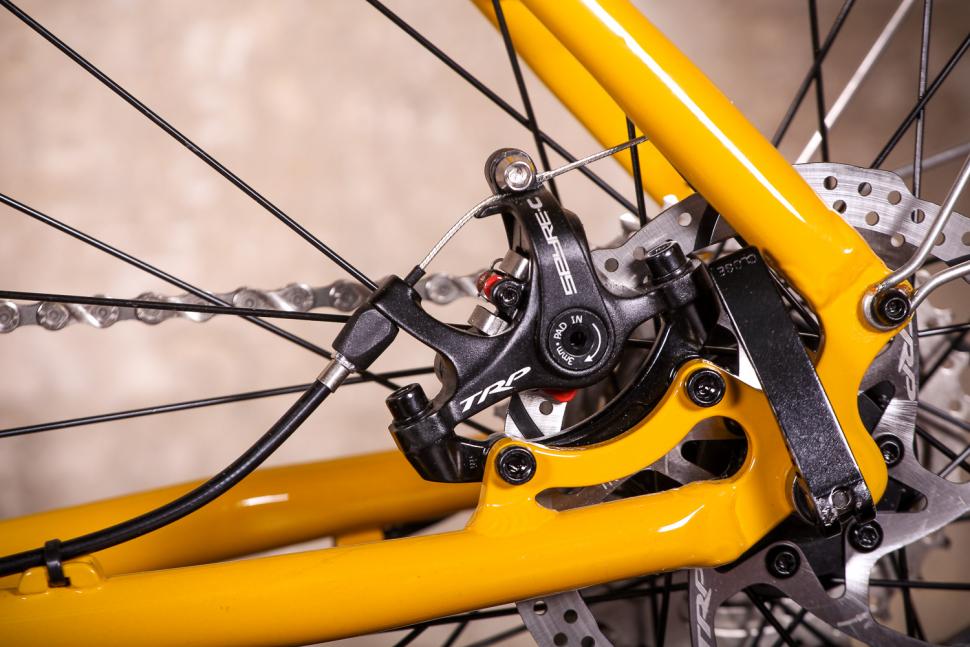
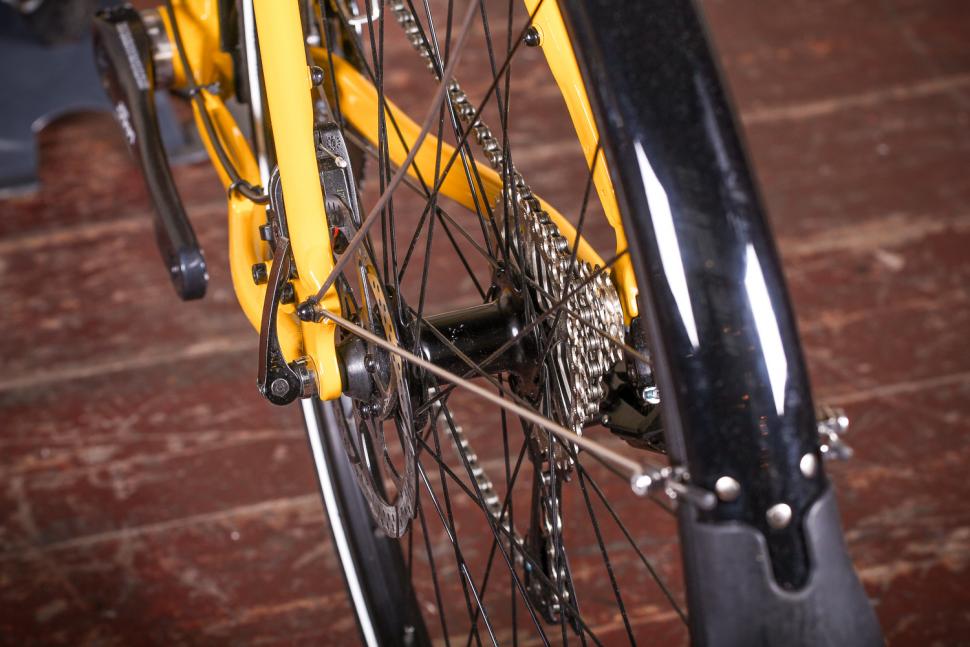

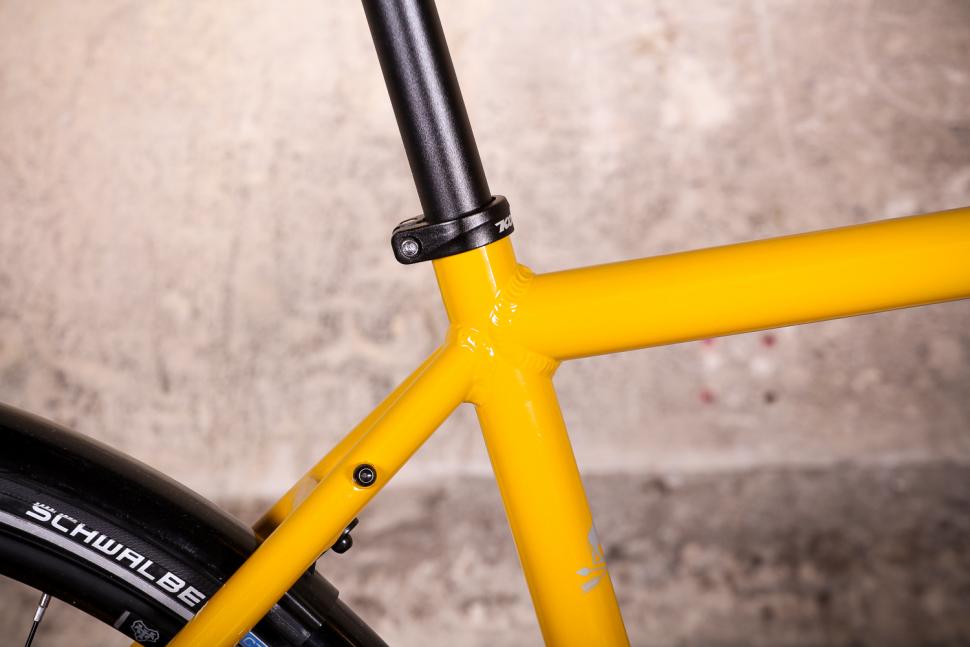
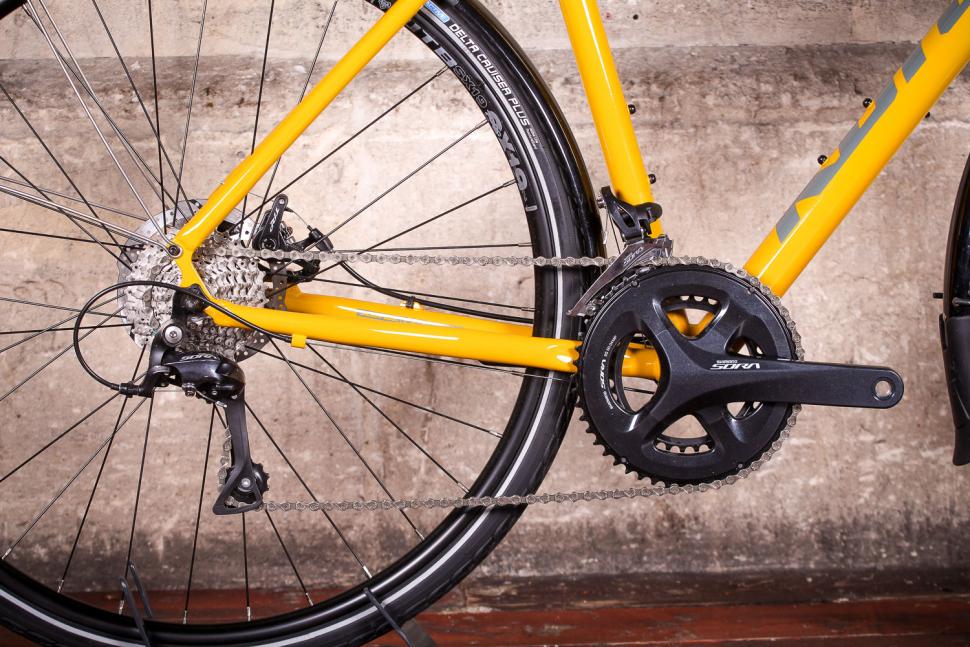
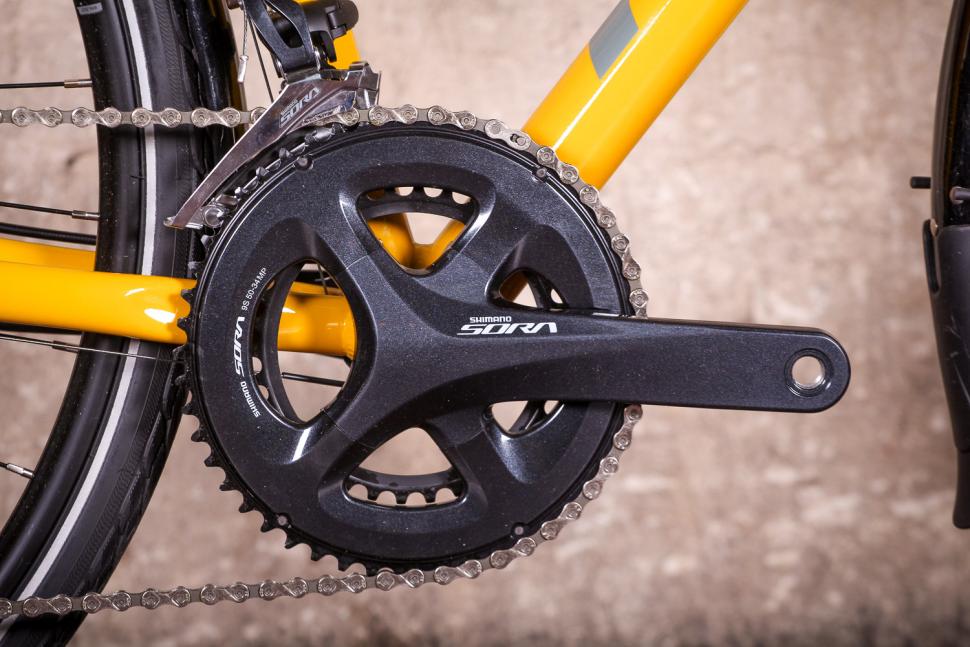
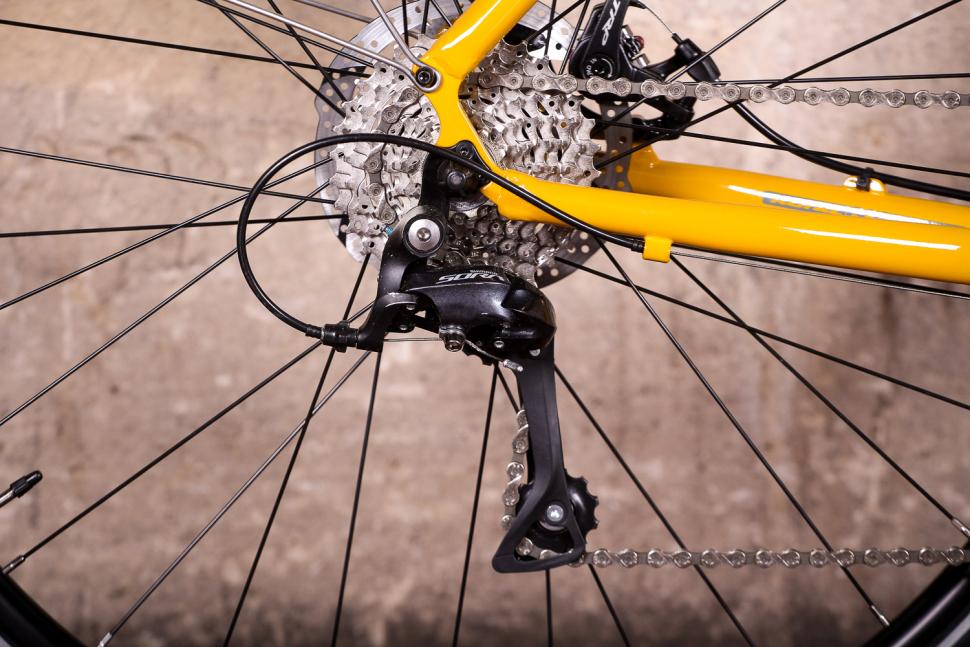
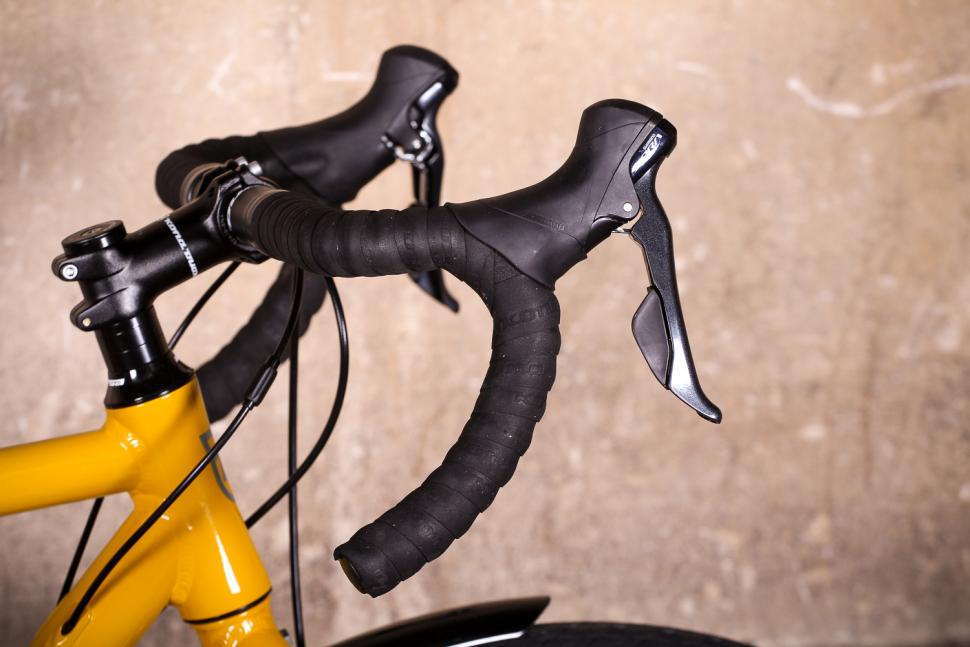
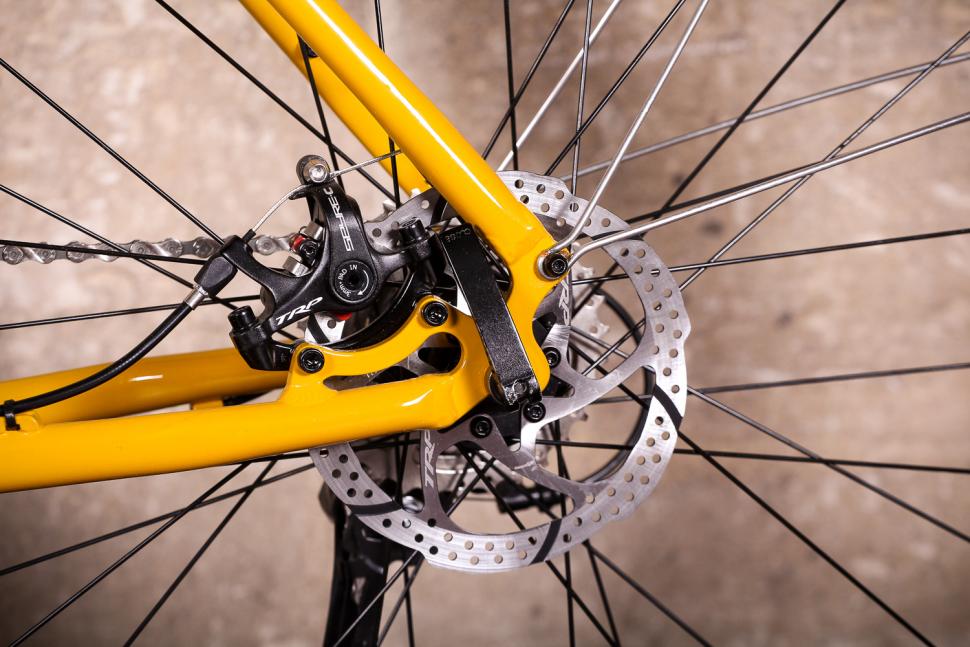

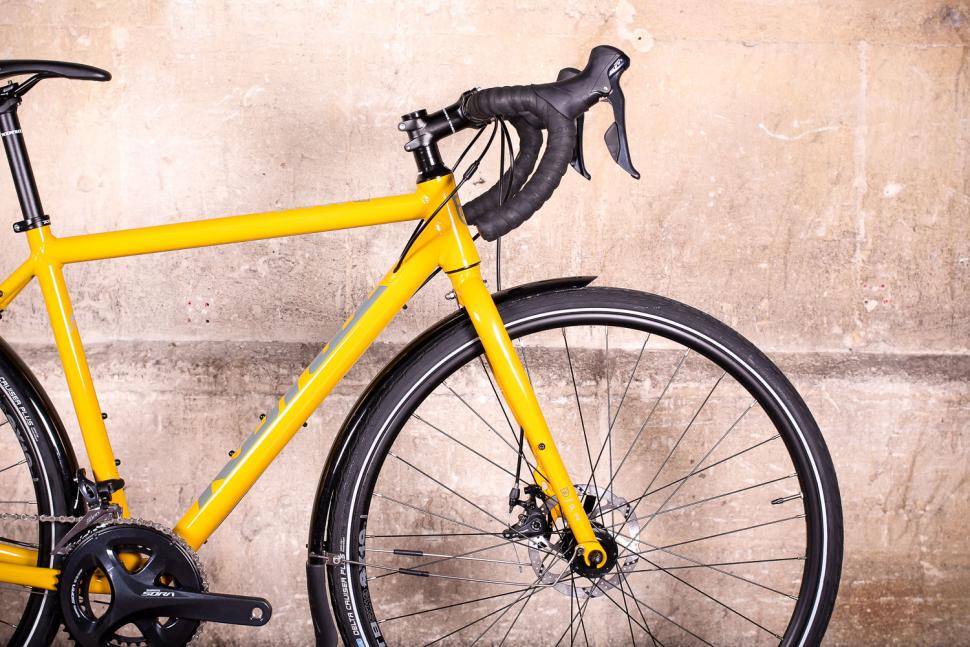
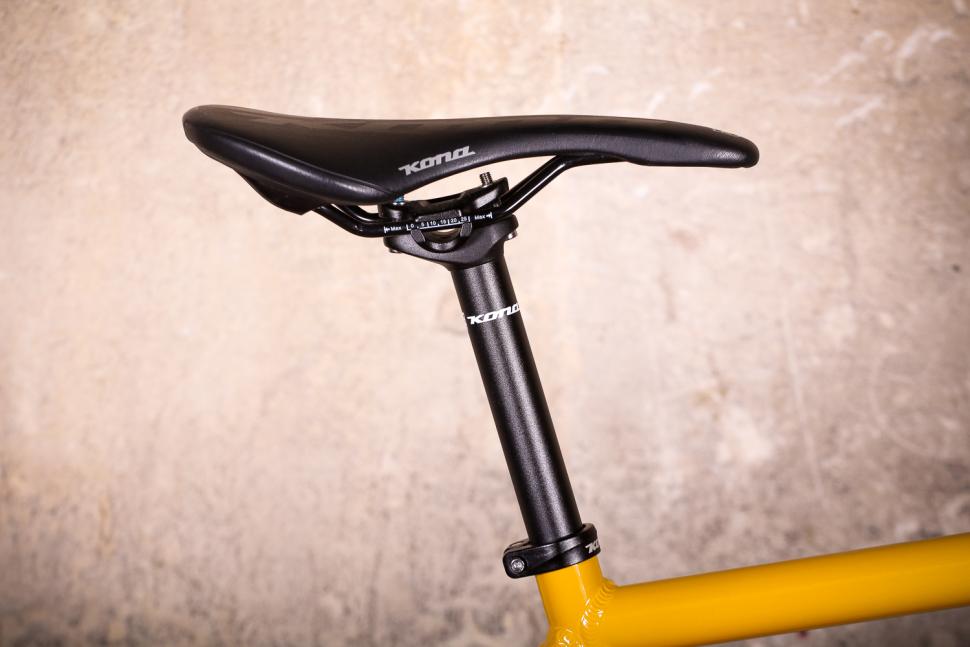
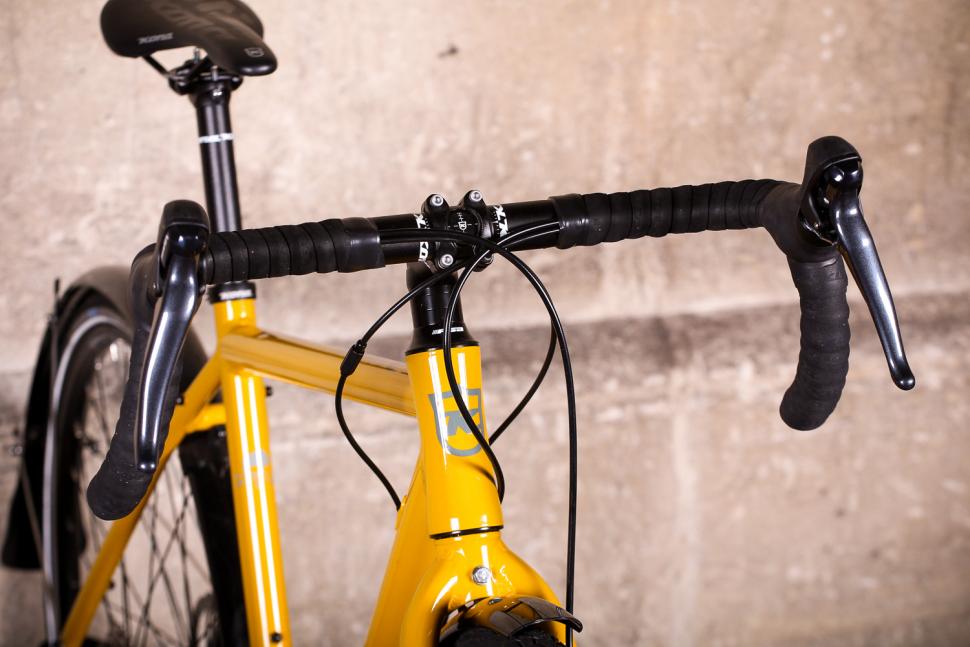
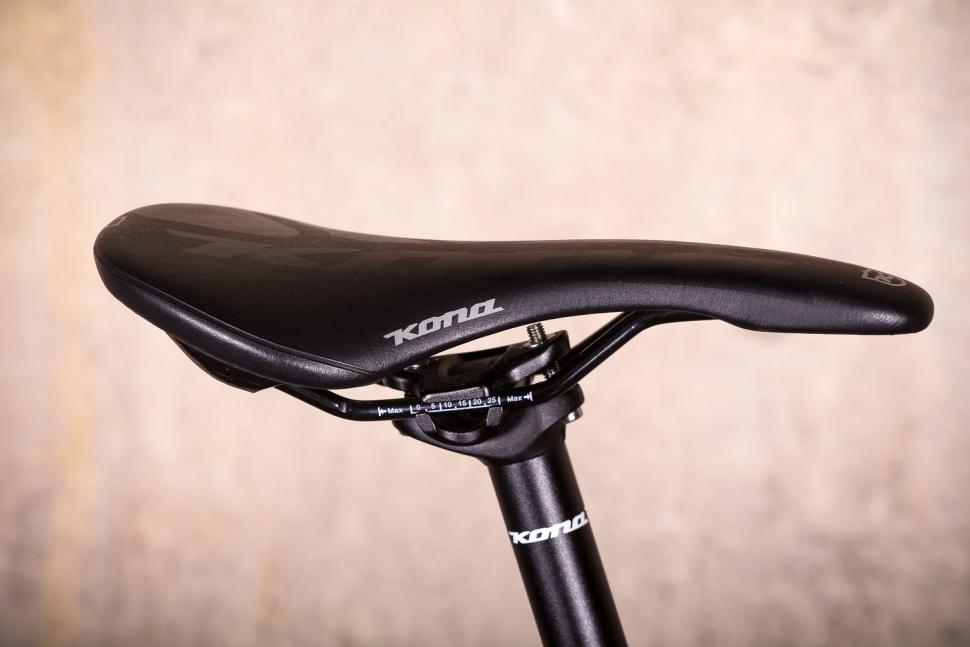



Add new comment
6 comments
Hi Stu! I need your advice. I'm buying gravel bike and i'm leaning toward Kona Rove aluminum version with claris components. But i have one concern. Retailers and official Kona page recommends size 56. Kona Rove with size 56 is by all specs big bike. Biger then other gravel bikes like Diverge, ViaNirone7 Allroad and similar bikes (Stack is 608, Reach is 392 and Wheelbase is 1049). I'm scared that it will be to big and to slow compared to allready mentioned competitors. My height is 180 cm, same as you but you have tested size 52 and that confuses me. As i see you are satisfied with this bike and should i take smaller size since?
I was told by the store rep that Kona sizes are bigger than than stated. I was surprised to hear him say 54cm size frame was good for me. I am 6ft tall. Can someone please confirm if size is ok or do I need to go 56cm?
Not surprised the TRP Spyre brakes let the package down. They're constantly described as "the best mechanical disc brakes out there" which still means they're crap compared to hydraulics. Why can you buy a £400 MTB with hydraulic brakes but you need to spend about £1500 before they appear on road/gravel bikes?
Tech, and it becoming the norm. Also remember that shifters have to be incorporated into a small clean package.
A Deore hydraulic lever can be had for £20 but the cheapest hydraulic road shifters are still £200+
Agreed, but it's hardly cutting edge tech is it? I bought a £500 mtb in 1999 with disc brakes. It hadn't been around that long then. Disc brakes on road bikes have been around since about 2011, so when do we start to see the benefits?
And, back to my other point, my TRP brakes on my CX bike are not even as good as the rim brakes on my winter hack. And they're shocking in the wet. Not something I ever experience on the hydraulic brakes on the MTB.
Would love cheap road hydros - but picture MTB reservoir and changers and mentally try and fit them in a road lever... Unfortunately even 'cheap' options are dear - thinking trp hylex plus barends (280 ish all up) or the hope adaptors (over 200 plus existing levers) I guess the best current balance between cheap and good are trp hy/rds plus normal STIs - from direct experience a lot better than spyres....